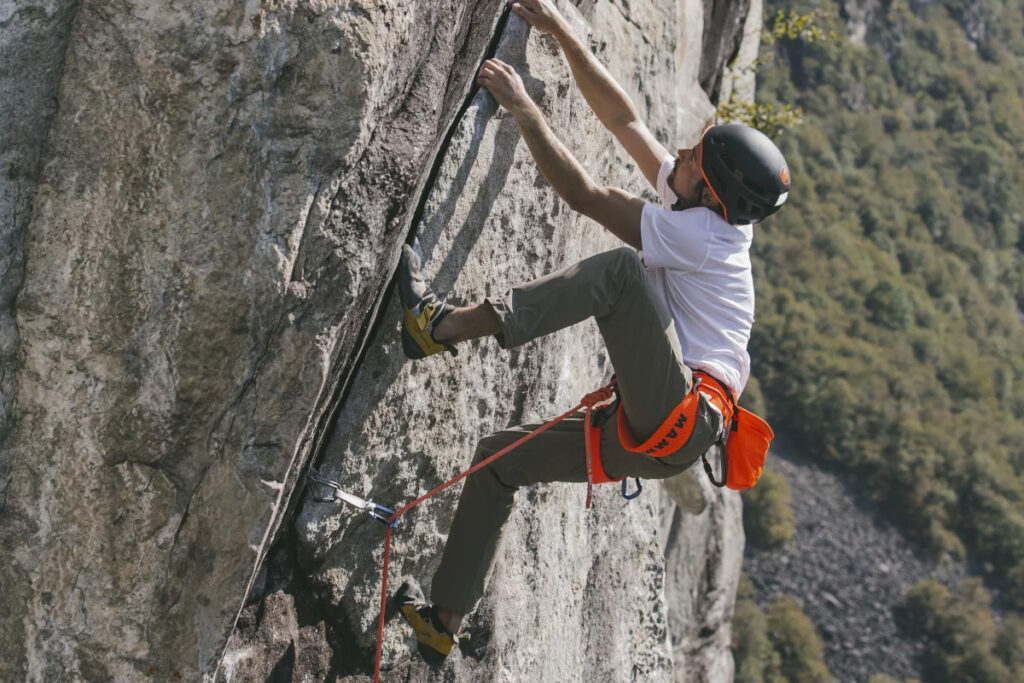Mountaineering may appear to be an issue of physical fitness. Even though it is, to a particular extent, numerous common climbing mistakes and blunders can be made. As a result of warming up, you’ll be able to tackle more challenging routes and climb for more extended periods without tiring or exhausting your muscles. As a novice, this is critical since it will allow you to progress to more challenging climbs more quickly, allowing you to explore more routes and issues.
A clinic (many climbing gyms provide free clinics) or a climbing class can provide proper safety training. In addition, these seminars should allow you to put what you’ve learned into practice and have an expert go over your work to make sure you did it right and give your comments. A lack of feedback and credible/expert sources means YouTube videos and visual graphics aren’t enough.
Many climbers realize common climbing mistakes. That climbing is a beautiful workout in and of itself, so they give up weights and other forms of training in favor of just climbing. If you don’t do additional strength training, your muscles will become imbalanced, and you’ll be more prone to injury while climbing. Some of the most common climbing mistakes people make while mountaineering is listed here:
Not Breathing:
Because we spend so much time climbing, we should breathe, typically a common climbing mistake. However, it’s usual for climbers to hold their breath while attempting challenging climbs.” The inability to breathe impairs one’s capacity to make sound decisions, leading to poor route planning and navigation in the result. Exploring the mysteries of geology: ‘How much does the rock weigh?
Unfortunately, there’s no need to worry about common mountaineering mistakes because there is a simple solution: As you ascend increasingly challenging routes, take care to maintain a smooth and effortless breathing pattern. Furthermore, the dreaded “pump” can be exacerbated by holding your breath or inhaling shallowly, which increases lactic acid buildup in your muscles.

Just Looking Up:
A climber’s natural inclination is to look up because most common climbing mistakes in climbing begin and terminate at the bottom. When figuring out a route, it’s critical to search for handholds in all directions rather than just up. To avoid overstressing their hands and fingers, climbers must keep their eyes on the ground at all times. Exercising your legs is a magnificent way to build strength and endurance.
Climbing with Bent Arms:
Using bent arms and engaged muscles makes common mistakes in climbing holds appear larger and more potent to climbers. Because climbing with bent arms imposes additional stress on a climber’s strengths, it can lead to greater exhaustion and eventual failure on the route.
For more effective use of your muscles and skeleton, ascend with your arms straight. Common climbing mistakes, climbing with straight arms has the extra benefit of encouraging climbers to use their legs (and the large muscles they contain) more frequently.
Not Checking Knots:
Rock gyms and sports crags have made it easier to squeeze in a lot of common climbing mistakes in a short period, which has resulted in a lack of respect for climbing safety. You and your companion should make sure that the climber is correctly attached to the rope and that the bilayer has correctly rigged their gear before you leave the ground (and has their device secured with a locked carabineer). The opposite end of the rope is connected by making a knot, which prevents a climber from falling off the back.

Not Paying Attention to your Surroundings:
Climbers can be reckless in various ways, from strolling under boulders to belaying in rock fall zones to wandering across the rope of the person belaying. It is especially troubling given the sport’s inherent dangers and common climbing mistakes. It would help if you kept an eye out for any dangers that may be lurking around every corner, whether it be a cliff edge or another climber.
Not Wearing a Helmet:
Do you have any idea why so many rope-climbers choose to go without a protective helmet is a common mistake in climbing? Wearing a helmet is a no-brainer as helmets continue to get lighter, more comfortable, and more stylish.
Rocks and debris can be thrown above ropes, anchors, and other climbers, making top-ropers the most dangerous. There are also sport climbers who often say that rock fall isn’t a concern because of the steepness of their routes. Climbing a wall that steep is dangerous for most people, but sport climbers are still at risk of being turned over and smashing their heads against the wall if they fall.
Conclusion:
Even if you are an experienced climber, you will almost certainly make a common climbing mistake. Having fun is more essential in climbing than worrying about the hundreds of common mountaineering mistakes you may or may not complete, so don’t waste your time fretting over them. Seven of the most typical mistakes novice rock climbers make are listed above. Finally, if you want to save money when mountain climbing, you should find discount codes on Couponxoo.com which have lots of great deals you can find.

